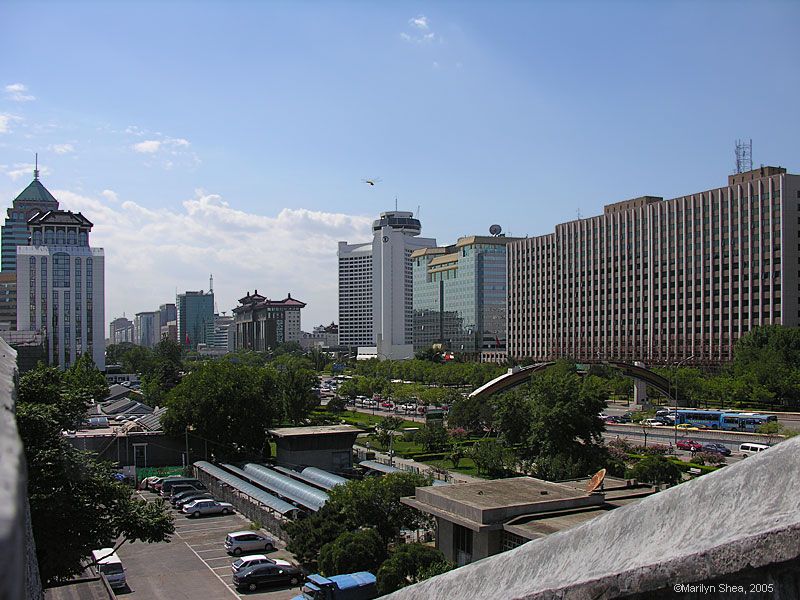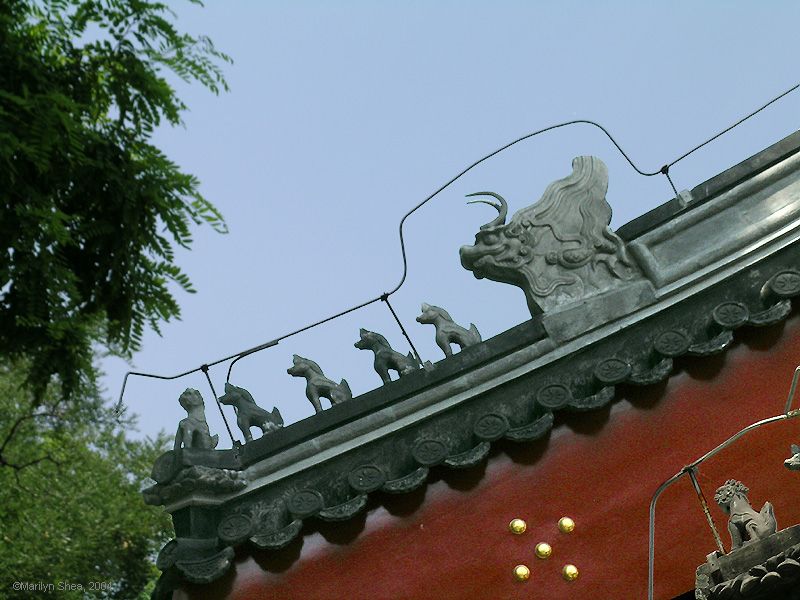| The Beijing Ancient Observatory was refurbished and opened as a museum in 1983. In 2004, it received a general face-lift to get ready for the Olympics in 2008. A few new instruments were added, needed repairs were made, and the displays in the museum were beautified. It didn't change the essential character of the observatory, which still takes you directly back to the Ming Dynasty.
The roof edge at Beijing Ancient Observatory shown above is in the classic style of the Ming Dynasty, while below is one of my favorite things about Chinese cultural and recreational areas. The variety and types of trash bins is impressive. Every effort is made to make them blend into the setting and be consistent with the buildings and surroundings. There are many different styles of ceramic figures, such as the one below, used in museums and historical landmarks. You will also see fish, tree stumps, panda bears, pagodas, and ones I have not yet discovered. For a photographer, it is a pleasure to not worry about a shot being ruined by an ugly green bin, but it is even better for the visitor's experience of the setting.
|




